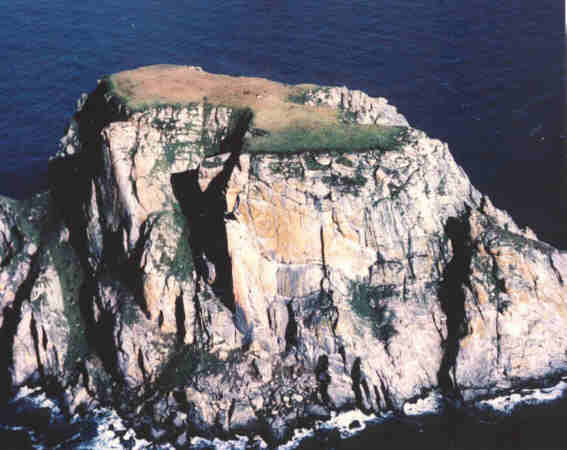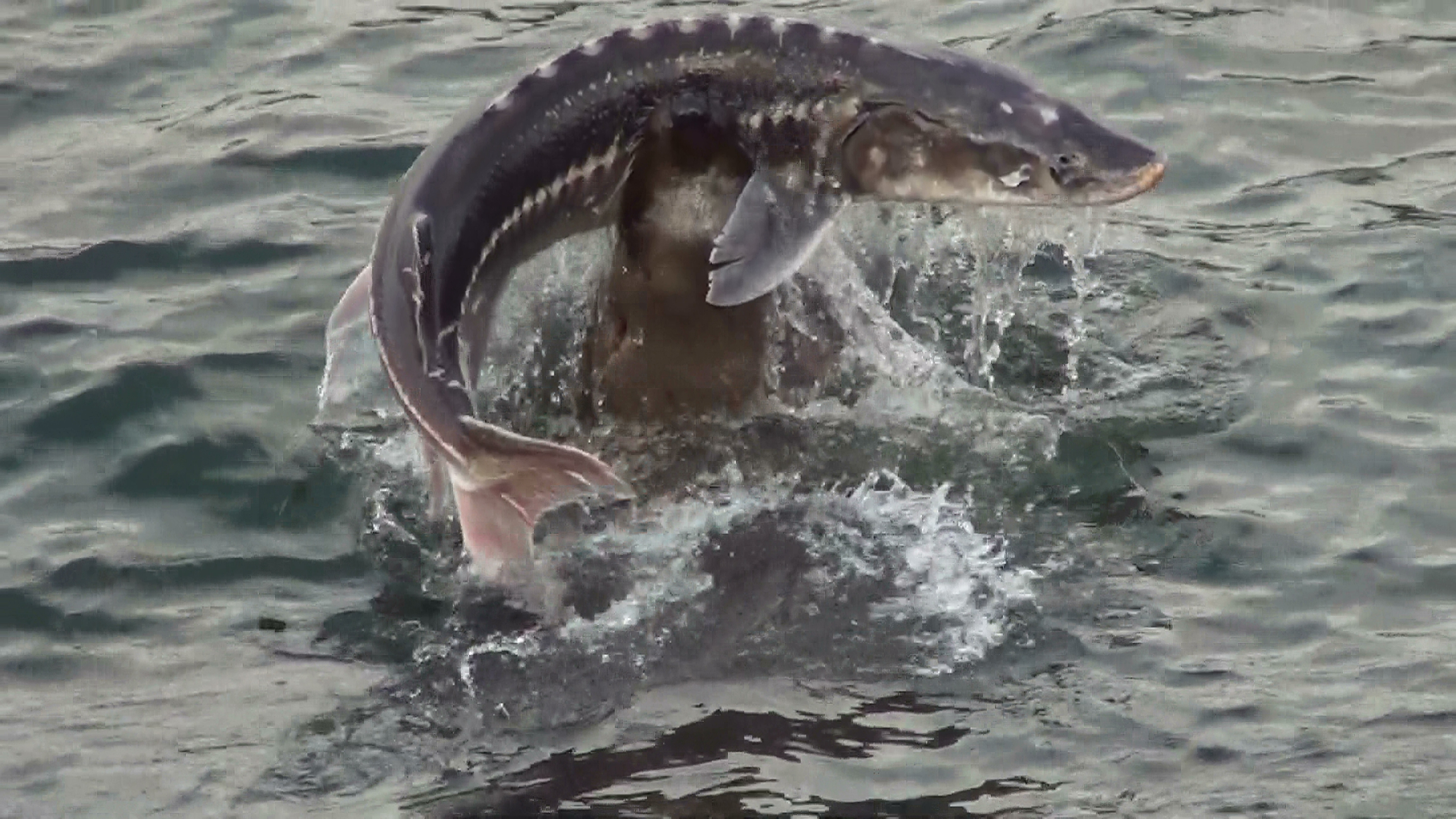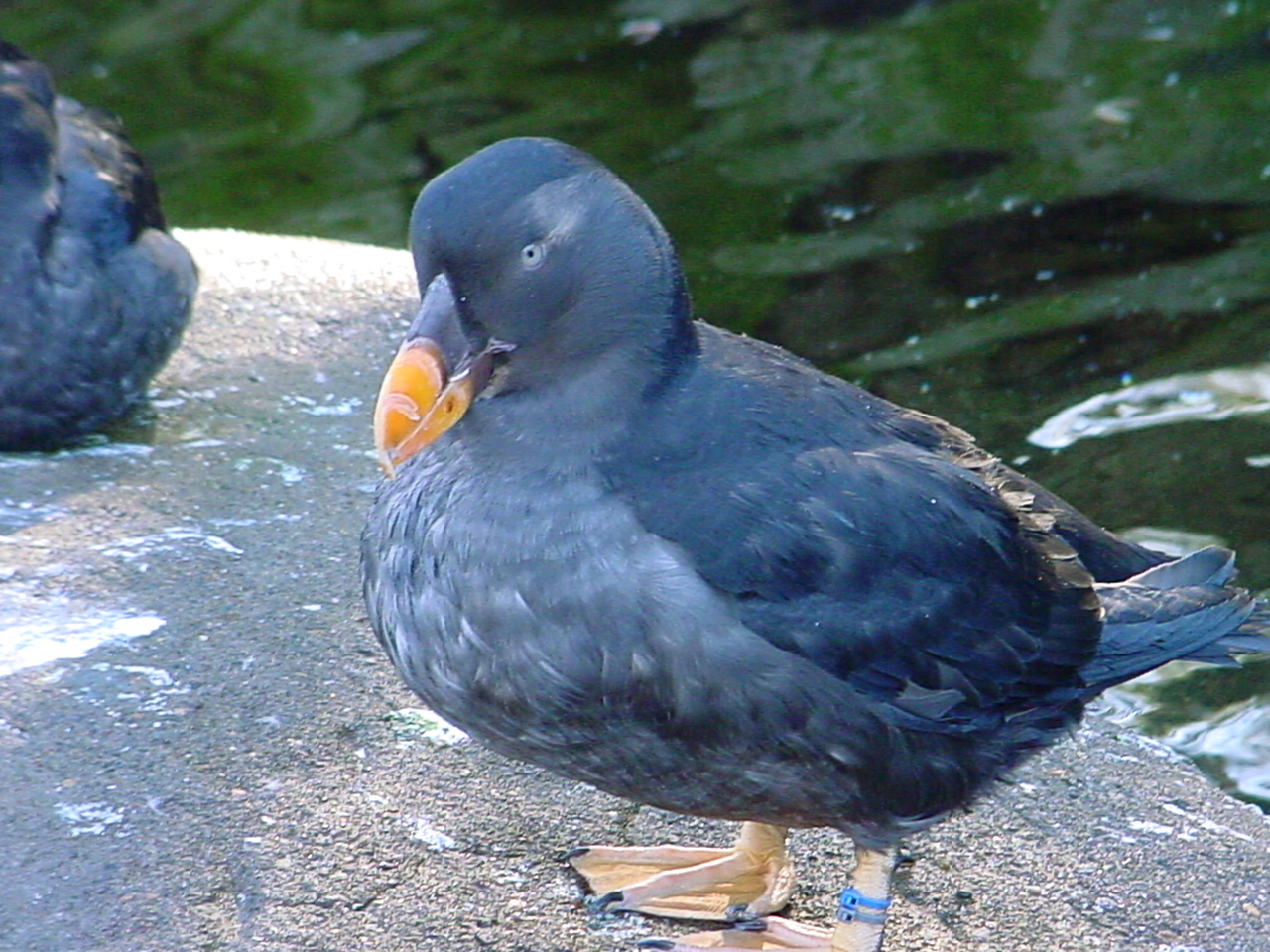|
Fairway Rock
Fairway Rock ( ik, Ugiiyaq) (Census block 1047, Nome, Alaska) is a small islet with mostly vertical rock faces in the Bering Strait, located southeast of the Diomede Islands and west of Alaska's Cape Prince of Wales. Part of Alaska, a U.S. state, the islet has an area of 0.3 km2 (0.12 mi2). Known to Inuit of the Bering Strait region in prehistory, Fairway was documented by James Cook in 1778 and named by Frederick Beechey in 1826. Although uninhabited, the island is a nesting site for seabirds — most notably the least and crested auklet — which prompt egg-collecting visits from local indigenous peoples. The United States Navy placed radioisotope thermoelectric generator-powered environmental monitoring equipment on the island from the 1960s through the 1990s. Geography The granite mass that is now Fairway Rock, like the larger nearby Diomede Islands, is the remnant of an earlier era of glaciation. Fairway Rock is situated SSE of Little Diomede Island and ... [...More Info...] [...Related Items...] OR: [Wikipedia] [Google] [Baidu] |
Alaska Department Of Fish And Game
The Alaska Department of Fish and Game (ADF&G) is a department within the government of Alaska. ADF&G's mission is to protect, maintain, and improve the fish, game, and aquatic plant resources of the state, and manage their use and development in the best interest of the economy and the well-being of the people of the state, consistent with the sustained yield principle. ADF&G manages approximately 750 active fisheries, 26 game management units, and 32 special areas. From resource policy to public education, the department considers public involvement essential to its mission and goals. The department is committed to working with tribes in Alaska and with a diverse group of State and Federal agencies. The department works cooperatively with various universities and nongovernmental organizations in formal and informal partnership arrangements, and assists local research or baseline environmental monitoring through citizen science programs. History In 1949, the Territorial Legislat ... [...More Info...] [...Related Items...] OR: [Wikipedia] [Google] [Baidu] |
USRC Thomas Corwin (1876)
The ''Thomas Corwin'' was a United States revenue cutter and subsequently a merchant vessel. These two very different roles both centered on Alaska and the Bering Sea. In 1912, Frank Willard Kimball wrote: "The ''Corwin'' has probably had a more varied and interesting career than any other vessel which plies the Alaskan waters." ''Thomas Corwin'' was the first revenue cutter to regularly cruise the Bering Sea and the Arctic Ocean.US Coast Guard, Historian's Office (a) Built in the state of Oregon, she was finished and commissioned in San Francisco which remained her home port. In a 23-year federal career, she participated in the search for the , landed scientific parties on Wrangel and Herald islands, took part in the shelling of the Tlingit village Angoon, interdicted whiskey traffic, rescued shipwrecked whalers, contributed to the exploration of Alaska, and arrested seal poachers. She had at least eight captains during her federal career, but is particularly associated wit ... [...More Info...] [...Related Items...] OR: [Wikipedia] [Google] [Baidu] |
John Muir
John Muir ( ; April 21, 1838December 24, 1914), also known as "John of the Mountains" and "Father of the National Parks", was an influential Scottish-American naturalist, author, environmental philosopher, botanist, zoologist, glaciologist, and early advocate for the preservation of wilderness in the United States of America. His letters, essays, and books describing his adventures in nature, especially in the Sierra Nevada, have been read by millions. His activism helped to preserve the Yosemite Valley and Sequoia National Park, and his example has served as an inspiration for the preservation of many other wilderness areas. The Sierra Club, which he co-founded, is a prominent American conservation organization. In his later life, Muir devoted most of his time to the preservation of the Western forests. As part of the campaign to make Yosemite a national park, Muir published two landmark articles on wilderness preservation in ''The Century Magazine'', "The Treasures o ... [...More Info...] [...Related Items...] OR: [Wikipedia] [Google] [Baidu] |
Frederick William Beechey
Frederick William Beechey (17 February 1796 – 29 November 1856) was an English naval officer, artist, explorer, hydrographer and writer. Life and career He was the son of two painters, Sir William Beechey, RA and his second wife, Anne Jessop.John Wilson, 'Beechey, Sir William (1753–1839)’, Oxford Dictionary of National Biography, Oxford University Press, 2004; online edn, Oct 200accessed 2 May 2017/ref> Born in London on 17 February 1796, he entered the Royal Navy at the age of 10 under the command of John Jervis, 1st Earl of St Vincent. He was promoted to midshipman on February 8 1807 and saw active service during the War of 1812. He served in the Battle of New Orleans. Because of this, he was promoted to 2nd lieutenant on March 10 1815 In early 1818, and now a lieutenant, Beechey sailed on HMS ''Trent'' under Lieutenant John Franklin in David Buchan's Arctic expedition, of which at a later period he published a narrative. In the following year he accompanied Li ... [...More Info...] [...Related Items...] OR: [Wikipedia] [Google] [Baidu] |
Steller Sea Lion
The Steller sea lion (''Eumetopias jubatus''), also known as the Steller's sea lion and northern sea lion, is a near-threatened species of sea lion in the northern Pacific. It is the sole member of the genus ''Eumetopias'' and the largest of the eared seals (Otariidae). Among pinnipeds, only the walrus and the two species of elephant seals are bigger. The species is named for the naturalist Georg Wilhelm Steller, who first described them in 1741. The Steller sea lion has attracted considerable attention in recent decades, owing to significant and largely unexplained declines in their numbers over an extensive portion of their northern range in Alaska. Description Adult animals are lighter in color than most sea lions, ranging from pale yellow to tawny and occasionally reddish. Steller sea lion pups are born almost black, weighing around , and remain dark in coloration for several months. Females and males both grow rapidly until the fifth year, after which female grow ... [...More Info...] [...Related Items...] OR: [Wikipedia] [Google] [Baidu] |
Glaucous Gull
The glaucous gull (''Larus hyperboreus'') is a large gull, the second-largest gull in the world. It breeds in Arctic regions of the Northern Hemisphere and winters south to shores of the Holarctic. The genus name is from Latin ''larus'', which appears to have referred to a gull or other large seabird. The specific name ''hyperboreus'' is Latin for "northern" from the Ancient Greek ''Huperboreoi'' people from the far north "Glaucous" is from Latin ''glaucus'' and denotes the grey colour of the gull. An older English name for this species is burgomaster. This gull is migratory, wintering from in the North Atlantic and North Pacific Oceans as far south as the British Isles and northernmost states of the United States, also on the Great Lakes. A few birds sometimes reach the southern USA and northern Mexico. Description This is a large and powerful gull, second-largest of all gull species and very pale in all plumage, with no black on either the wings or the tail. Adults are pa ... [...More Info...] [...Related Items...] OR: [Wikipedia] [Google] [Baidu] |
Thick-billed Murre
The thick-billed murre or Brünnich's guillemot (''Uria lomvia'') is a bird in the auk family (Alcidae). This bird is named after the Danish zoologist Morten Thrane Brünnich. The very deeply black North Pacific subspecies ''Uria lomvia arra'' is also called Pallas' murre after its describer. The genus name is from Ancient Greek ''ouria'', a waterbird mentioned by Athenaeus. The species term ''lomvia'' is a Swedish word for an auk or diver. The English "guillemot" is from French ''guillemot'' probably derived from ''Guillaume'', "William". "Murre" is of uncertain origins, but may imitate the call of the common guillemot. Murres have the highest flight cost, for their body size, of any animal. Description Since the extinction of the great auk in the mid-19th century, the murres are the largest living members of the Alcidae.Nettleship (1996) The thick-billed murre and the closely related common guillemot (or common murre, ''U. aalge'') are similarly sized, but the thick-bil ... [...More Info...] [...Related Items...] OR: [Wikipedia] [Google] [Baidu] |
Parakeet Auklet
The parakeet auklet (''Aethia psittacula'') is a small seabird of the North Pacific. Parakeet Auklets used to be placed on its own in the genus ''Cyclorrhynchus'' ( Kaup, 1829) but recent morphological and genetic evidence suggest it should be placed in the genus ''Aethia'', making them closely related to crested auklets and least auklets. It is associated with the boreal waters of Alaska, Kamchatka and Siberia. It breeds on the cliffs, slopes and boulder fields of offshore islands, generally moving south during the winter. Description The parakeet auklet is a small (23 cm) auk with a short orange bill that is upturned to give the bird its curious fixed expression. The upward bend of the beak has been observed to provide advantages in picking up small food pieces from the sea bottom as well as in assisting in the disintegration of larger food objects. The bird's plumage is dark above and white below. with a single white plume projecting back from the eye. There is a smal ... [...More Info...] [...Related Items...] OR: [Wikipedia] [Google] [Baidu] |
Horned Puffin
The horned puffin (''Fratercula corniculata'') is an auk found in the North Pacific Ocean, including the coasts of Alaska, Siberia and British Columbia. It is a pelagic seabird that feeds primarily by diving for fish. It nests in colonies, often with other auks. It is similar in appearance to the Atlantic puffin, its closest relative of the North Atlantic, but differs by a "horn" of black skin located above the eye, present in adult birds. Etymology The binomial name of this species, ''Fratercula corniculata'', comes from the Medieval Latin ''fratercula'', meaning “friar”; their black-and-white plumage resembling the robes of monks. ''Corniculata'' means “horn-shaped” or “crescent-shaped”, in reference to the black horn above the bird's eye. The vernacular name ''puffin'' – puffed in the sense of swollen – was originally applied to the fatty, salted meat of young birds of the unrelated species, the Manx shearwater (''Puffinus puffinus''), formerly known as the ... [...More Info...] [...Related Items...] OR: [Wikipedia] [Google] [Baidu] |
Tufted Puffin
The tufted puffin (''Fratercula cirrhata''), also known as crested puffin, is a relatively abundant medium-sized pelagic seabird in the auk family (Alcidae) found throughout the North Pacific Ocean. It is one of three species of puffin that make up the genus ''Fratercula'' and is easily recognizable by its thick red bill and yellow tufts. Description Tufted puffins are around in length with a similar wingspan and weigh about three quarters of a kilogram (1.6 lbs), making them the largest of all the puffins. Birds from the western Pacific population are somewhat larger than those from the eastern Pacific, and male birds tend to be slightly larger than females. They are mostly black with a white facial patch, and, typical of other puffin species, feature a very thick bill which is mostly red with some yellow and occasionally green markings. Their most distinctive feature and namesake are the yellow tufts ( la, cirri) that appear annually on birds of both sexes as the su ... [...More Info...] [...Related Items...] OR: [Wikipedia] [Google] [Baidu] |
Fairway Rock 0489
Fairway may refer to: *Fairway (golf), part of a golf course *Fairway (navigation), a part of a water body with navigable channel *Fairway (horse), a Thoroughbred racehorse *Fairway, Gauteng, South Africa *Fairway, Kansas, United States *Fairway, Lexington, neighborhood in Lexington, Kentucky, United States *Fairway Market, an American grocery chain based mostly in New York City *Fairway Markets, a grocery chain on Vancouver Island in British Columbia, Canada *Fairway, a version of London's Austin FX4 taxicab See also *Farway, a small village and civil parish in the East Devon district of Devon, England *Fairway Rock, an islet in the Bering Strait * Faraway (other) Faraway may refer to: Music * "Faraway (Hoshi ni Negai o)", a song by Gackt, 2009 * "Faraway", a song by Jay Chou from '' Still Fantasy'' * "Faraway", a song by Miz * "Faraway", a song from ''Little Busters!'' * "Faraway Vol.2", a song by Apocaly ... * Fareway, a grocery store chain in Boone, Iowa {{disa ... [...More Info...] [...Related Items...] OR: [Wikipedia] [Google] [Baidu] |

.png)







